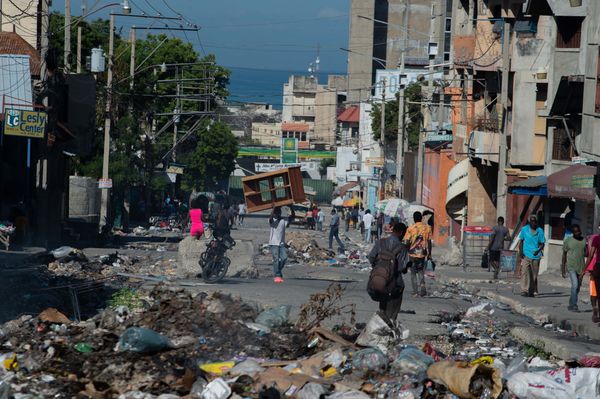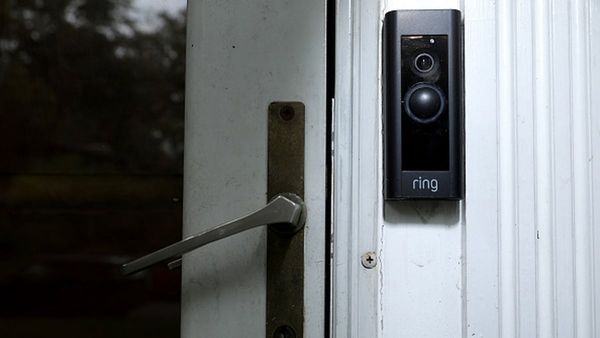
“Vice-Admiral Mead, you’re free to go home … good to see you cracking a smile.”
The head of the Australian Submarine Agency had spent a withering three hours before Senate estimates, parrying a barrage of questions about Australia’s ambitious Aukus nuclear submarine plan: interrogatives on consultants, on hundreds of millions of dollars sent to US and UK shipyards, on sclerotic boat-building on both sides of the Atlantic.
But while so much focus has been on Australia’s nuclear submarines’ arrival, their price tag and their “sovereign” status, the greatest challenge to the Aukus project, Mead told the Senate, would be finding the people to keep them afloat and at sea.
“Ensuring Australia has the workforce to deliver this program remains our biggest challenge,” he said.
If Australia’s nuclear submarines arrive on these shores – and that remains a contested question, with expert opinion ranging from an absolute yes to a certain no – will Australia be able to crew, supply and maintain them?
“It is a challenge we are continuing to meet,” Mead told senators. “Australian industry and navy personnel continue to build critical experience through targeted international placements.”
Others are less sanguine.
“The Aukus optimal pathway is a road to a quagmire,” says a former admiral and submarine commander, Peter Briggs, arguing that Australia’s small submarine arm can’t be upscaled quickly enough. “It’s not going anywhere. It will not work.”
Onshore trades, too, are perilously short. Without an additional 70,000 welders by 2030, that trade’s peak body says: “The Aukus submarine program is at serious risk of collapse.”
Mead was asked directly by senators: “Are you still confident of meeting the government’s agenda and timings?”
“Yes,” he replied, “I am.”
‘An eye-wateringly long process’
Briggs, a past president of the Submarine Institute of Australia, says the Aukus plan reads like one “designed by a political aide in a coffee shop”.
The navy’s submarine arm is approximately 850 sailors and officers (the defence department declined to give exact figures). The former chief of navy previously told parliament it needed to grow to 2,300 by the 2040s.
But Briggs estimates that to crew and support Australia’s Virginia-class, and later, Aukus-class submarines, the navy will need to more than treble its existing complement to about 2,700.
Virginias are massive submarines – nearly 8,000 tons – and carry a crew of 134, more than twice the existing Collins-class crew of 56. The Aukus submarines to be built in Adelaide will be bigger again. More tonnage, more people.
“That’s a huge increase in what is already in very scarce supply,” Briggs argues.
“Australia is not graduating enough mechanical marine engineers, we have never generated enough new commanding officers – we’ve survived by poaching old commanding officers from the Royal Navy – and now we want to increase those numbers threefold, perhaps more?”
He says entrants to the navy’s submarine arm are being pushed towards nuclear training programs while the six Collins-class submarines are starved of new sailors. It has been reported that only one, HMAS Dechaineux, is fully operational.
Sign up: AU Breaking News email
The new generation of submariners is needed for between three and five Virginia-class submarines, then up to eight Australian-built Aukus boats.
“To get to be chief engineer of a nuclear submarine takes 16 to 18 years,” Briggs says. “It’s an eye-wateringly long process and of course you lose people along the way.
“That’s why you need a broad base, a critical mass, and Australia simply doesn’t have that right now. There is no way a navy the size of ours can manage this mix.”
Briggs does not believe the US will withdraw from Aukus: the presence of nuclear submarine bases on Australian soil is too great a prize for a superpower wanting to project power into the Pacific. But Australia’s unreadiness could lead to nuclear submarines under domestic command being delayed.
“We’ve got no warranty clause, no guarantee of anything. The cop-out could come in 2031, the US might say, ‘Look, you’re not quite ready yet, let’s push everything back three years, check in again in 2034.’ And it’s Australia that’s left exposed.”
‘Beyond frustrating, it’s dangerous’
Beyond the complexity of commanding and crewing a nuclear submarine, the vessels need a vast and highly trained workforce to keep them supplied, afloat and at sea.
Mead told the Senate more than 170 navy personnel had started US nuclear submarine training: 65 had completed it and were gaining experience on US boats. “By 2030 we expect to have 400 … officers and sailors trained and ready to serve.”
Onshore, the government estimates up to 4,000 workers will be needed to upgrade the Osborne submarine construction yard in South Australia. Up to 5,500 more will be needed to build the Aukus submarines.
But some allied trades run acutely short. Weld Australia argues that, without urgent action to address a critical shortage of welders, the Aukus program will collapse before the first boat is built.
“This is not just a workforce challenge,” its chief executive, Geoff Crittenden, said in a statement. “It’s a full-blown capability crisis … If we don’t address this issue now, Aukus will fail.”
Aukus represented a “perfect storm”, he said, and failure to address worker shortages was “beyond frustrating, it’s dangerous”.
“A once-in-a-generation opportunity like Aukus demands a long-term, strategic response, not just investment in ships and steel, but in people. We estimate that Australia will be at least 70,000 welders short by 2030. Without immediate action, the project is doomed to delays, cost blowouts, or worse.”
Associate Prof Edward Obbard, director of the nuclear innovation centre at the University of New South Wales, says Australia faces an “incredibly difficult” task.
“We will have to move very quickly,” he says. “The timelines are short and right now there are insufficient numbers of trained experts to support a sovereign nuclear-propulsion program.
“Really, the pipeline had to start 10 years ago.”
Obbard says the required workforce can be conceived of as three distinct tiers.
Tier-one workers are “subject-matter experts” – a fraction of the total Aukus workforce but ideally with upwards of 20 years of experience – charged with making the key strategic and policy decisions.
The first cohort won’t be Australian. “In the short term there will have to be an influx of international talent, as we train and upskill our own people.”
Tier two is a nuclearised workforce of skilled professionals – scientists, electrical and mechanical engineers, technical managers, reactor operators and health physicists – with advanced training and between seven and 10 years’ experience. The majority of a submarine crew would sit in this tier. Obbard estimates that about 5,000 tier-two workers will be needed.
Tier three is a further cohort of “nuclear-aware” workers – between 5,000 and 6,000 again – tradespeople including machinists, fitters and welders, who will require some nuclear training.
“The Aukus plan cannot work without building this workforce and the wider engineering community this workforce is drawn from.”
‘Does it make sense?’
Jack Dillich is uniquely placed to observe Australia’s transformation to a nuclear submarine power. A former submarine officer, he holds an advanced degree in nuclear engineering and served on the executive of the Australian Nuclear Science and Technology Organisation, where he was responsible for the country’s sole nuclear reactor, and as head of the regulatory branch at the Australian Radiation Protection and Nuclear Safety Agency. He now teaches a nuclear course at the Australian Defence Force Academy.
Dillich supports Aukus and says the pathway to an Australian-built nuclear submarine capability is narrow.
The first two steps in Aukus pillar one are achievable, he says: Australia has the capacity to build the infrastructure required for a small nuclear fleet and Australia can train talented personnel who can gain experience overseas.
But the third step – the decision to build nuclear submarines in Australia – is a political not a practical one, he argues. While creating Australian jobs is a worthy ambition, the plan may prove to be unjustifiable economically.
“Australia needs to be asking, ‘Does it make sense to try to build a tiny fleet here?’ Maybe 25 years from now, Australia could have eight nuclear-propelled submarines: they would be very, very expensive.”
Establishing the workforce will require billions of dollars of investment over decades, he says. “Is your defence capability any greater than if you had simply purchased the boats from the US or UK, where shipyards have been doing this for 50 years?
“The most straightforward, expeditious, and least expensive way of getting nuclear-propelled submarines is to focus on training up our young officers and enlisted sailors overseas over the next 10 years. And when the first Virginia-class boat is delivered, have them ready to transition to crewing those submarines.”
The man in charge of delivering Australia’s nuclear submarines – for all the urgings from senators to smile – is not underestimating the challenge.
Acquiring nuclear submarines is “something that has never been undertaken before in this country”.
“[It’s] probably one of the most complex engineering tasks in the world.”







